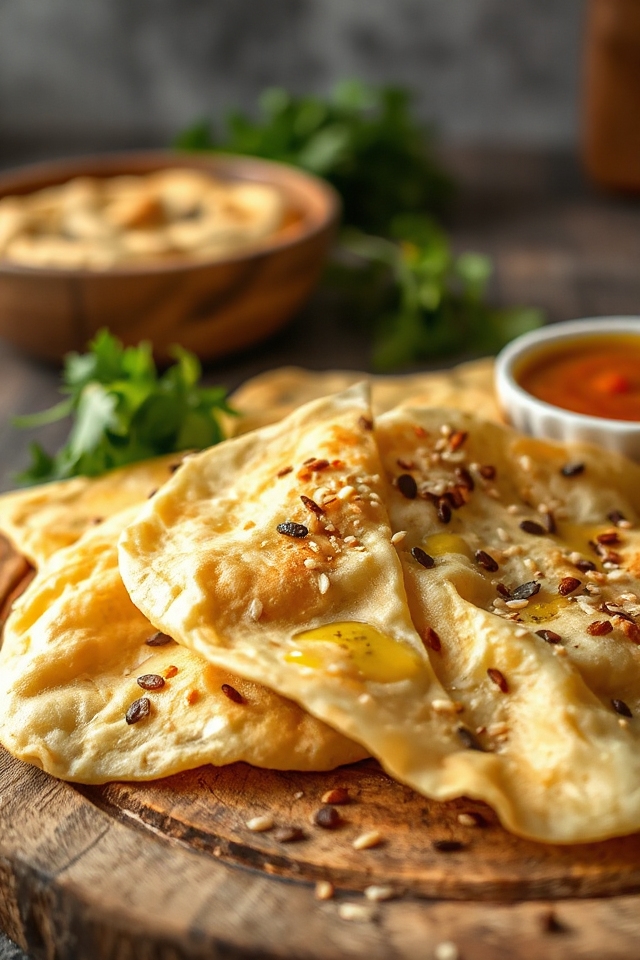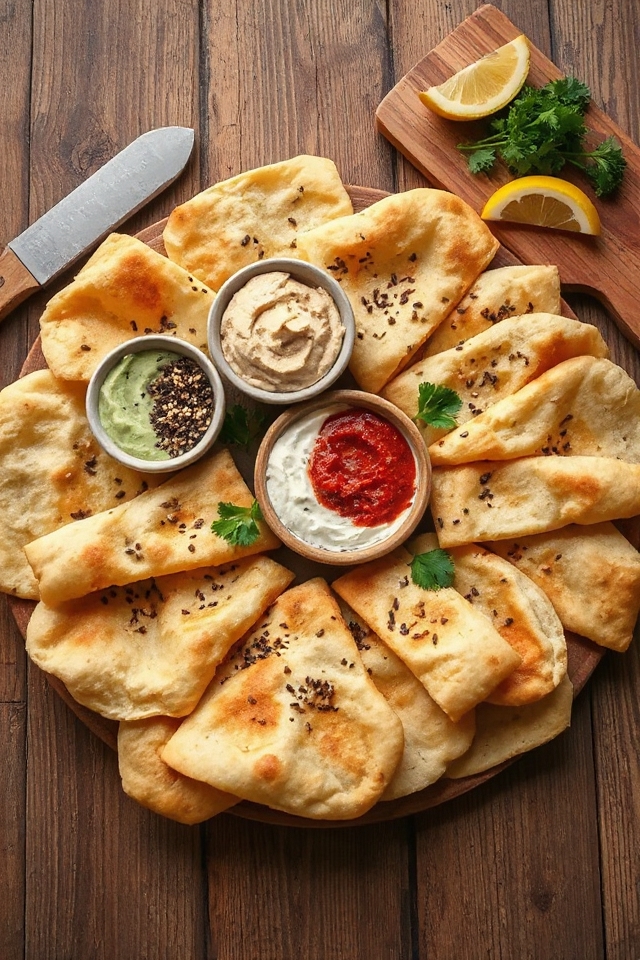Why You’ll Love This Lavash Bread Recipe
When you try this lavash bread recipe, you’ll quickly see why it’s a favorite in so many kitchens. The process is surprisingly simple, and the results are incredibly satisfying.
I love how you can customize it with different flours or seeds, making each batch uniquely yours. The aroma that fills my kitchen while it’s baking is irresistible!
Plus, it’s versatile—perfect for wraps, dips, or just enjoying on its own. Once you taste that warm, slightly crispy texture, you’ll understand why I keep coming back to this recipe.
It’s sure to become a staple in your home, too!
Ingredients of Lavash Bread
When it comes to making lavash bread, the ingredients are simple but oh-so-important. It’s amazing how a handful of basic items can transform into something so delicious. You’ll need a few staples, some flour, and a touch of yeast.
Whether you’re a seasoned baker or just starting out in the kitchen, you’ll find that these ingredients are easy to work with and create a fantastic result. Plus, you can mix and match different flours or seeds to make it uniquely yours. Let’s explore what you need to get started on this lovely lavash journey.
Here’s the list of ingredients you’ll need to whip up your batch of lavash bread:
- 2 1/4 teaspoons of yeast
- 1 1/4 cups of warm water
- 1/4 cup of plain yogurt (or substitute with more water if you prefer)
- 1 teaspoon of salt
- 2 cups of all-purpose flour
- 2 cups of whole wheat flour (feel free to get creative with your flour choices)
- Toasted sesame seeds or poppy seeds for sprinkling on top
Now, let’s talk about those ingredients. You might be wondering if you can swap out flours or leave out the yogurt. The good news is that this recipe is pretty flexible.
If you’re gluten-free, you can experiment with gluten-free flour blends. Just keep in mind that the texture might change a little. And that yogurt? It adds a nice tang and moisture, but if you don’t have any on hand, water works just fine.
How to Make Lavash Bread

Making lavash bread is a delightful experience that can turn any kitchen into a cozy little bakery. So, roll up your sleeves and let’s get started.
First off, you’ll need to activate 2 1/4 teaspoons of yeast in 1 1/4 cups of warm water. Just sprinkle that yeast over the water and give it a gentle stir until it’s all dissolved. It’s like waking up the yeast from its sleepy slumber, and trust me, this step is vital for fluffy bread.
While that’s bubbling away, grab a bowl and mix in 1 teaspoon of salt and 1/4 cup of plain yogurt. The yogurt adds a lovely tang and moisture, but if you’re out of it, don’t sweat it; just use a bit more warm water.
Once your yeast is all frothy and excited, combine it with the yogurt-salt mixture. Now, prepare your flour! You’ll need 2 cups of all-purpose flour and 2 cups of whole wheat flour, but feel free to mix and match.
Pour in just enough flour to form a stiff dough, then turn it onto a floured surface and knead it for about 8 to 10 minutes until it’s smooth and elastic. Don’t worry if it feels a bit sticky at first; it’ll come together.
Shape that dough into a ball, place it in a greased bowl, and cover it up to let it rise for about 1 1/2 hours. When it doubles in size, give it a gentle punch down (it’s surprisingly satisfying) and let it rise again for about 30 minutes.
Now comes the fun part—shaping the dough. After it’s risen, divide it into 8 pieces. Roll each piece out on a lightly floured surface until it’s a thin circle, about 9 inches in diameter. If you’re feeling ambitious, you can also roll out one big sheet of lavash.
Brush a bit of olive oil on top, then sprinkle it with toasted sesame seeds or poppy seeds for a little extra crunch. Place your rounds on a baking sheet and pop them into a preheated oven at 400°F for just 5 to 6 minutes.
Keep an eye on them; they should be dry, lightly browned, and blistered. And voila! You’ve just made some delicious lavash bread. It’s perfect for wraps, dips, or just nibbling on while you pat yourself on the back for a job well done.
Lavash Bread Substitutions & Variations
While I love the traditional lavash bread recipe, there are plenty of substitutions and variations you can try to suit your taste or dietary needs.
For a gluten-free option, swap the all-purpose and whole wheat flour for a gluten-free blend. If you want a richer flavor, consider adding herbs like rosemary or garlic powder to the dough.
You can also experiment with different seeds, like flaxseed or chia seeds, for added nutrition. For a tangy twist, replace the yogurt with buttermilk or even a dairy-free yogurt.
These small changes can make your lavash uniquely yours!
Additional Tips & Notes
To guarantee your lavash turns out perfectly every time, I recommend keeping a few key tips in mind.
First, make sure your water is warm, not hot, to activate the yeast properly.
Knead the dough until it’s smooth and elastic—this step is vital for texture.
When rolling out the dough, aim for thinness, as it helps achieve that signature crispiness.
Don’t skip the resting periods; they’re essential for the dough to rise well.
Finally, keep an eye on your lavash while baking; it can go from golden to overdone quickly.
Enjoy experimenting with flavors and toppings for a personal touch!
